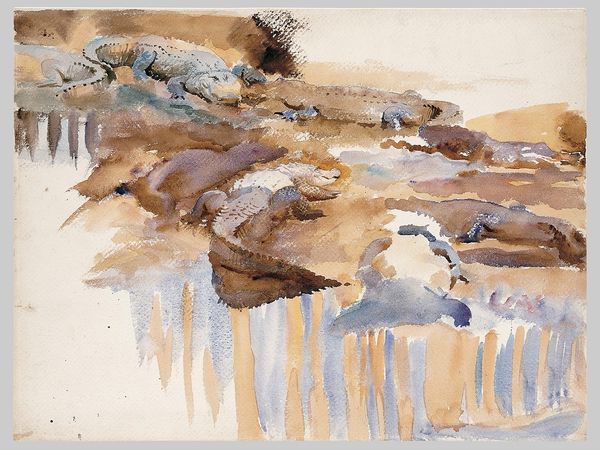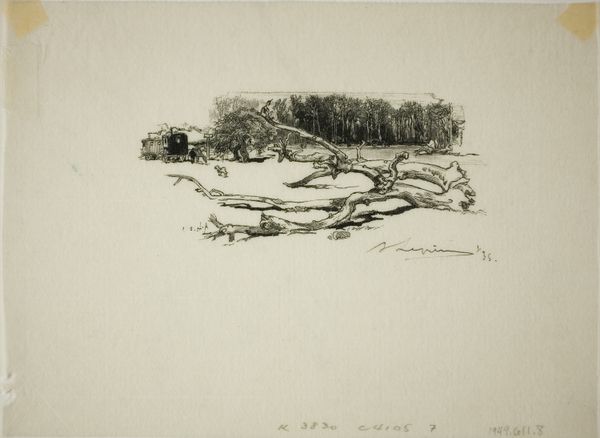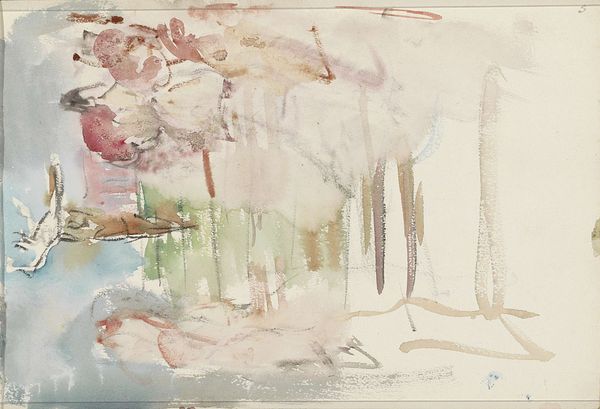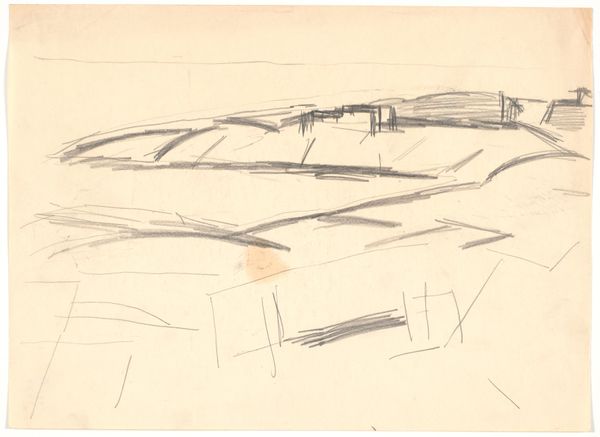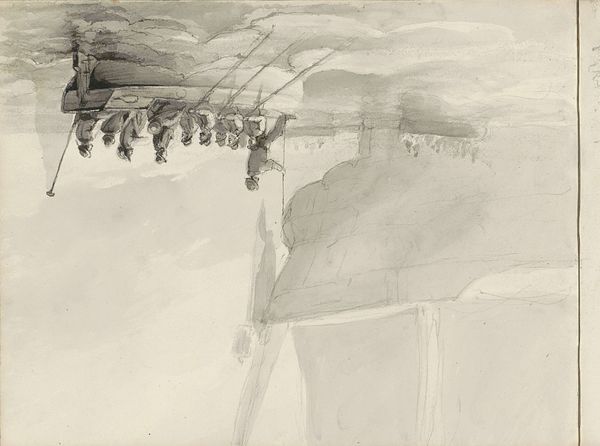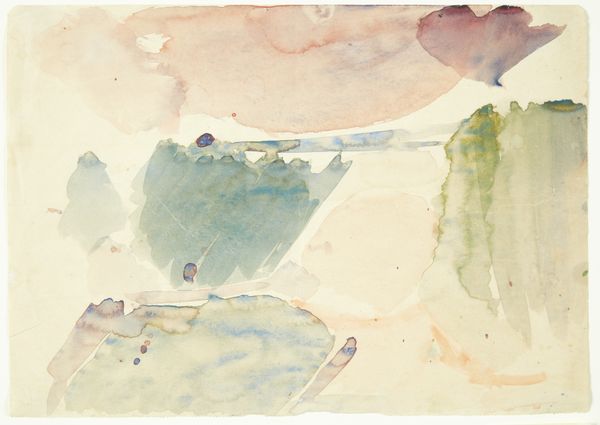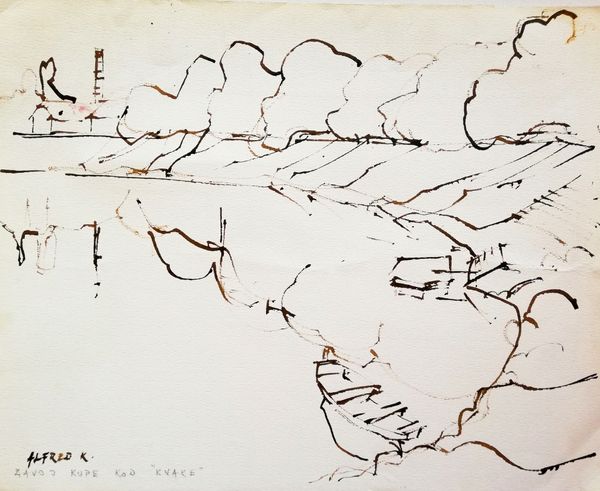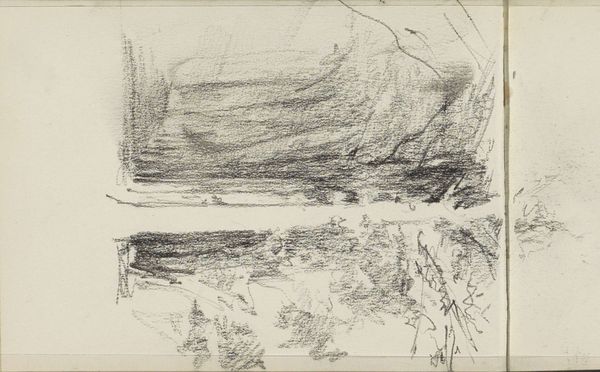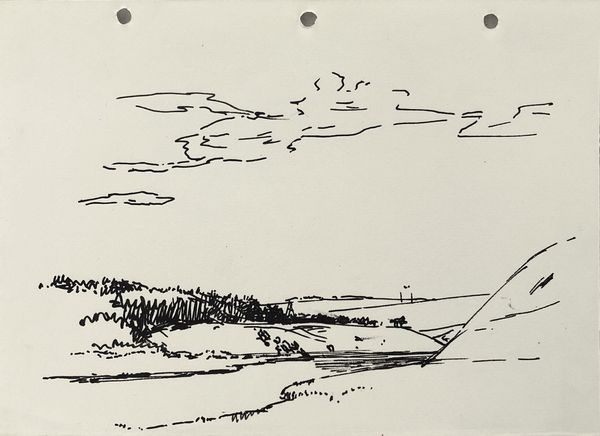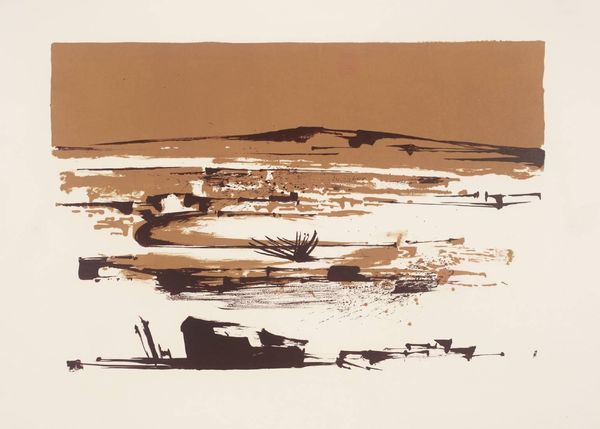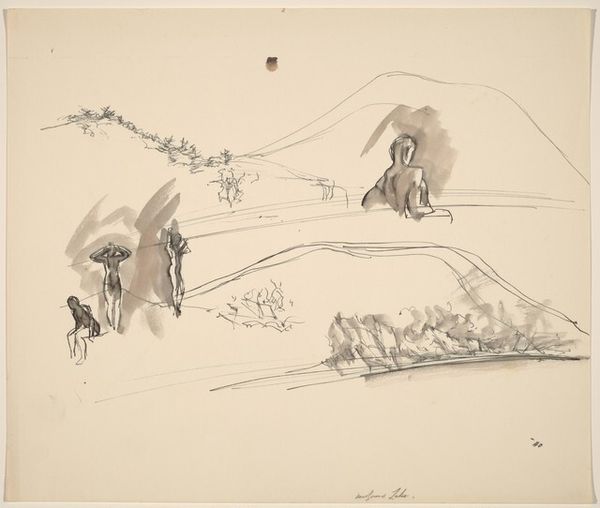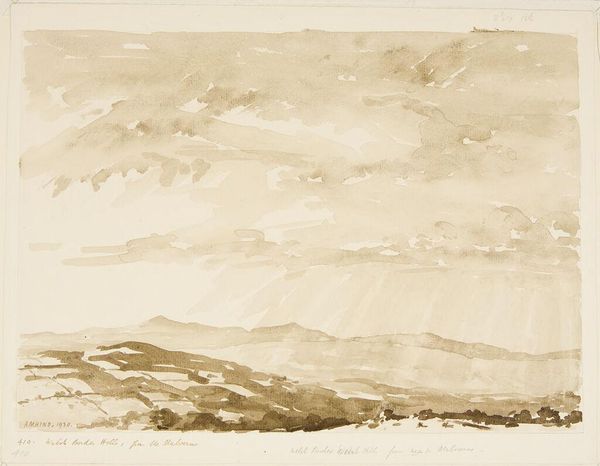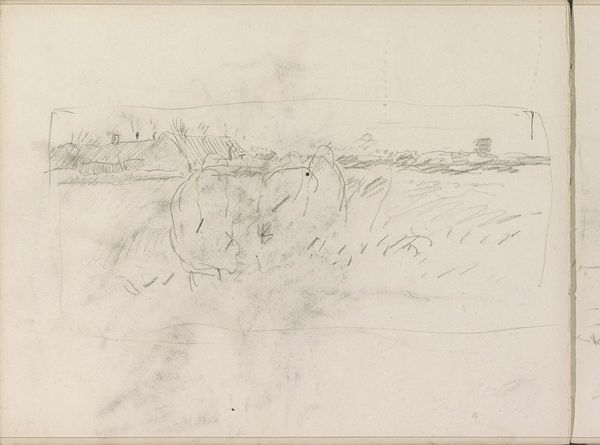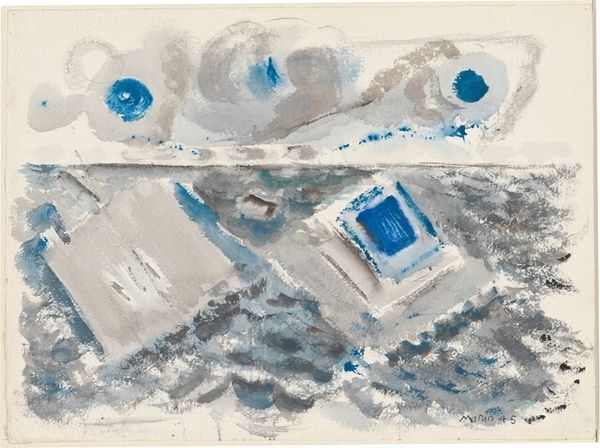
drawing, watercolor, ink
#
action-painting
#
drawing
#
ink drawing
#
landscape
#
watercolor
#
ink
#
abstraction
#
watercolour illustration
#
modernism
Dimensions: sheet: 19.37 × 25.4 cm (7 5/8 × 10 in.)
Copyright: National Gallery of Art: CC0 1.0
Curator: Elaine de Kooning's 1974 work, "Etampes", executed with ink and watercolor, invites us to explore the artist's landscape-inspired abstraction. Editor: My first impression is a subdued, almost melancholic landscape. The restricted palette and delicate washes give it a feeling of transience. It feels both serene and unsettling. Curator: It’s interesting you say that, because De Kooning's work has always navigated this boundary between personal expression and the objective world. "Etampes" appears at first to be a typical landscape, yet on closer examination, it dissolves into abstract forms. It’s from a period when she traveled widely; this engagement is crucial for interpreting how she visually negotiates and records different landscapes and cultures. Editor: Absolutely, I think that transience is particularly pertinent in examining post-war trauma as it manifested for women who were forced to create their place within masculinist art world environments and gendered expectations more broadly. De Kooning's method of layering and obscuring recalls psychological concealment during periods of change. The location “Etampes” seems geographically irrelevant next to her visual representation of memory. It creates space for broader feelings about existing at a time and a place, without ever fully becoming of it. Curator: The gestural quality, of course, is tied to the action painting movement, emphasizing the physical act of creation. These blurred lines suggest an attempt to grasp a moment. Looking at it now, one could consider her rapid brushstrokes a proto-feminist expression; an exploration of the ephemeral experience, that so many women share as time-bound, undervalued citizens. Editor: Yes, and this perspective enhances how we examine abstraction itself. I would push back against associating all "action" with proto-feminism simply because it involves female authorship; her abstractions still must contend with her particular choices and place within social dynamics. Instead, thinking about how de Kooning negotiated space using form, ink, and line; that to me has profound political dimensions. Curator: An interesting perspective! It forces us to consider whose perspective dictates value judgments, historically, institutionally and aesthetically. Editor: It suggests that by interrogating aesthetic "value" alongside broader feminist objectives, there will be more justice in art and other arenas.
Comments
No comments
Be the first to comment and join the conversation on the ultimate creative platform.
